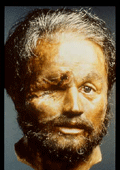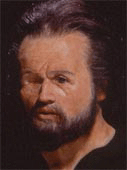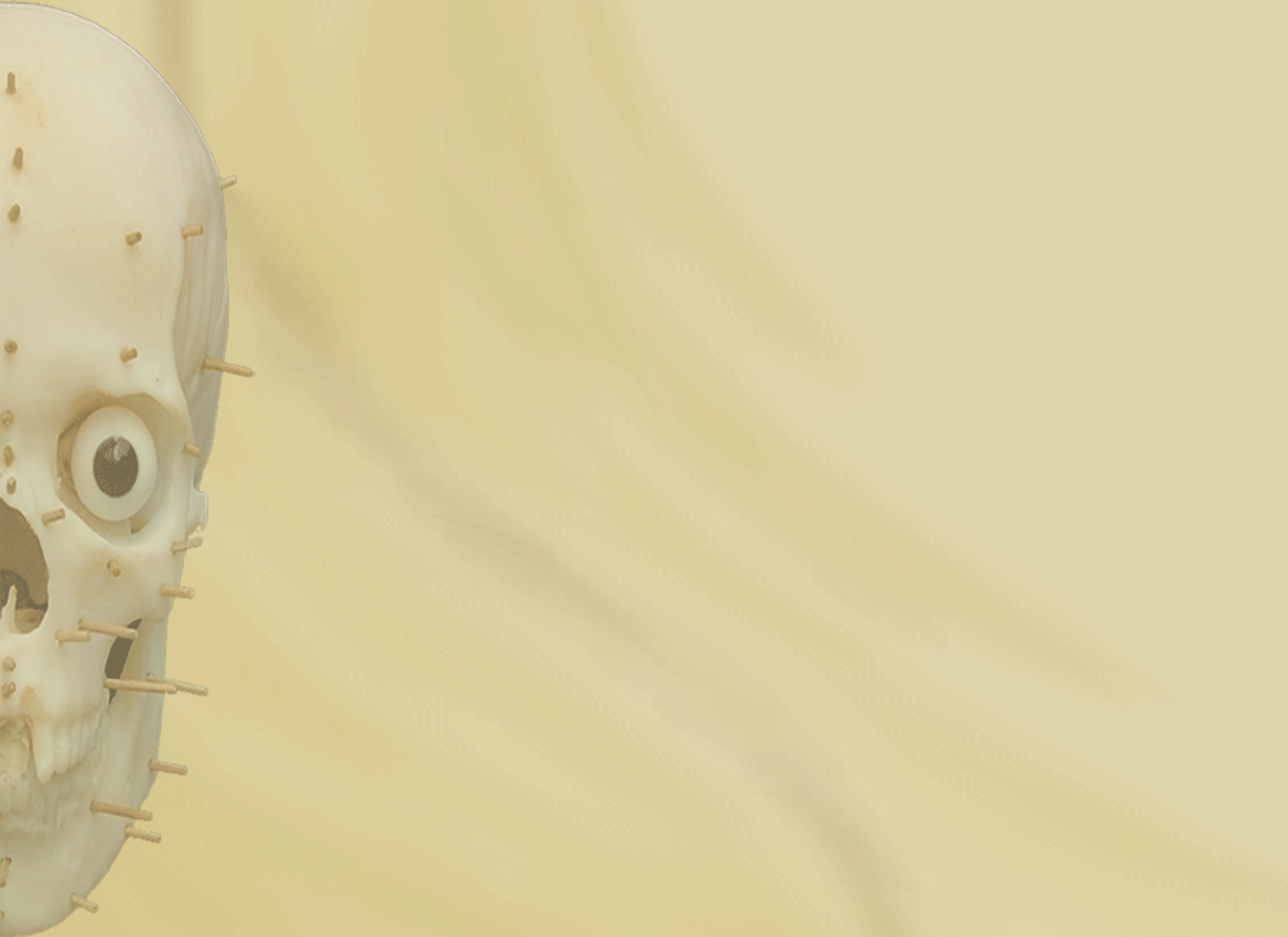King Philip II of Macedon
In 1979, Professor Manolis Andronicos allowed Richard Neave and his colleagues access to a skull discovered beneath a great tumulus in Vergina, Macedonia, Greece. The skull was important, as it was hoped that it may provide answers to two important questions - where was the original capital of the Macedonians and who was buried beneath the great tumulus ? The capital had been moved around 400 BC to the site of Pella which was well known to archaeologists, but the royal dead continued to be buried at the previous capital of Aigai - a site which was unknown to modern scholars. If the body could be proved to belong to a member of the royal family, it would be possible to say that Vergina was the site of Aigai.
Examination of the contents of the tombs below the tumulus pointed to a date in the later fourth century BC for the burial. The skull was that of a man of between thirty-five and fifty-five. It was probably a member of the royal family - not Alexander the Great (who was buried in Egypt), but possibly either his half-brother Philip III Arrhidaeus or his father Philip II. The most important forensic evidence was the mark of an injury to the right eye and cheek, almost certainly caused by a downward blow to the face that had cost him the sight in his right eye.
This evidence was vital in identifying the dead man - Philip II is known to have lost the sight in his right eye as a result of an arrow striking him from the walls of Methone in northern Greece whilst his army was beseiging it in 354 BC - this confirmed Andronicos's thesis that this was the tomb of Philip.
The original reconstruction was made showing the eye wound as untreated and rather gruesome looking (fig 1). However, attention was drawn to a passage from the Roman author Pliny, in which he states that the injury to Philip was treated "without causing disfigurement to the face". A second reconstruction was produced with the wound shown as "healed" (fig 2).




